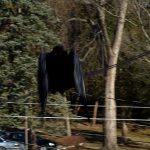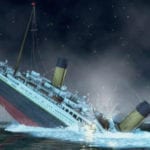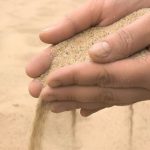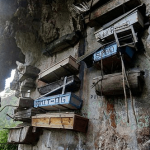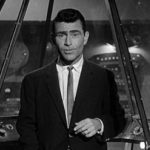 Miscellaneous
Miscellaneous  Miscellaneous
Miscellaneous  Our World
Our World 10 Green Practices That Actually Make a Difference
 Humans
Humans Ten Historic Men Who Deserve Way More Credit Than They Got
 Movies and TV
Movies and TV The 10 Most Heartwarming Moments in Pixar Films
 Travel
Travel Top 10 Religious Architectural Marvels
 Creepy
Creepy 10 Haunted Places in Alabama
 History
History Top 10 Tragic Facts about England’s 9 Days Queen
 Food
Food 10 Weird Foods Inspired by Your Favorite Movies
 Religion
Religion 10 Mind-Blowing Claims and Messages Hidden in the Bible Code
 Facts
Facts 10 Things You Never Knew about the History of Gambling
 Miscellaneous
Miscellaneous Ten Groundbreaking Tattoos with Fascinating Backstories
 Our World
Our World 10 Green Practices That Actually Make a Difference
 Humans
Humans Ten Historic Men Who Deserve Way More Credit Than They Got
Who's Behind Listverse?

Jamie Frater
Head Editor
Jamie founded Listverse due to an insatiable desire to share fascinating, obscure, and bizarre facts. He has been a guest speaker on numerous national radio and television stations and is a five time published author.
More About Us Movies and TV
Movies and TV The 10 Most Heartwarming Moments in Pixar Films
 Travel
Travel Top 10 Religious Architectural Marvels
 Creepy
Creepy 10 Haunted Places in Alabama
 History
History Top 10 Tragic Facts about England’s 9 Days Queen
 Food
Food 10 Weird Foods Inspired by Your Favorite Movies
 Religion
Religion 10 Mind-Blowing Claims and Messages Hidden in the Bible Code
 Facts
Facts 10 Things You Never Knew about the History of Gambling
10 Things You May Not Know about the Production of The Lion King
The Lion King is a popular animated musical drama film produced by Walt Disney Feature Animation. The film was released on June 15, 1994, receiving much acclaim for its music, story, themes, and animation. It was the highest-grossing film of 1994. Today, it is hard to find anyone who hasn’t watched the movie, either young or old. While there are many facts about the production of the movie that are known to a majority of its fans, there are other facts that are little known. These are ten things you may not know about the production of The Lion King.
Related: Top 10 Easter Eggs Hidden in Disney Movies
10 The Animation Was Made by B-Team Animators
When The Lion King was made, it was made by B-Team animators. This is because Disney was also working on another animated film at the time: Pocahontas (1995). Disney believed that Pocahontas would be the more successful of the two, so it got the A-Team animators, while The Lion King got the B-Team animators. Eventually, the film Disney believed in less turned out to be more successful. The popular animated movie was made on a budget of $250-$260 million but went on to gross $1.12 billion worldwide.[1]
9 The Film Was Almost Titled ‘King of the Jungle’
The Lion King is a recognizable movie title anywhere in the world, but the movie nearly had a different title. The very first title proposed for the movie was The King of the Kalahari, which gave way to the title King of the Jungle. The second title nearly stuck, but then the producers realized that there was no jungle in the movie. The setting was a savannah. It was out of this conundrum that the idea of the title The Lion King was born.[2]
8 An Earthquake Made Disney Shutdown Production Temporarily
During the making of The Lion King, the production was interrupted by an earthquake in Los Angeles on January 17, 1994. With six months to go before the film hit the cinemas, the earthquake struck, leading to 57 deaths and 8,000 injuries. The impact of the earthquake affected the Walt Disney Animation Studios, as well as the transport facilities in and around the Los Angeles area. While some animators were still able to make their way to the studio on a daily basis, their daily routine became much more tedious, and others simply opted to sleep in the studio.
At one point, the Walt Disney Animation Studios had to be totally shut down. The only option was for the animators to take the movie home. The production team then had to shuttle the artwork and other materials around to the homes of animators just to stay on schedule for the film’s release. It took tremendous effort under very difficult circumstances to get the film finished. Little did the producers know that the movie being made across different garages in people’s homes would become the highest-grossing film of 1994.[3]
7 A Link to the Movie Coming to America
The movies The Lion King and Coming to America (1988) share two interesting similarities. The two movies are both incredibly popular and have likely been seen by most people or at least known by almost everyone. The other is that the king and queen in Coming to America— James Earl Jones and Madge Sinclair—were also the voices of King Mufasa and Queen Sarabi, the parents of Simba in The Lion King. We do not know the reason behind the choice of the duo for their roles in The Lion King, but we are sure that the fans of the Disney movie love it.[4]
6 The Hyena March Scene Inspired by Nazi Germany
The theme of “betrayal” is one of the prominent themes of the movie. When the wicked Scar sings about his plan to murder his brother and king, Mufasa, in “Be Prepared,” what most viewers of the movie do not know is that much of the scene was based on a Nazi propaganda film titled Triumph of the Will. During the production of The Lion King, Jorgen Klubien, one of the people who worked on the project pictured Scar as Hitler.
The directors decided to pursue the concept, and the idea of a Nuremberg-style rally was born. In the “Be Prepared” scene, the hyenas that Scar intends to use in the plot to kill Mufasa are grouped in a similar formation to the Nazi rallies in Triumph of the Will. Also, just as Scar stands over a cliff overlooking his army of hyenas, Hitler was also portrayed the same way in much of the Nazi documentary.[5]
5 Animators Traveled to Kenya for Inspiration
In order to get premium inspiration for the movie, the animators of The Lion King visited Hell’s Gate National Park in Kenya. The valleys we see in the wildebeest stampede scene were inspired by some of the valleys in the park in Kenya. The animators also got the inspiration for pride rock from some rock formations in Hell’s Gate National Park.
There is one irony about the national park visit—there are no lions at the park. However, this allowed the visitors to take in the savannah without disturbance. The Hell’s Gate National Park is one of the few parks in East Africa where visitors can choose to hike the totality of the park.[6]
4 The Original Director Quit When The Lion King Became a Musical
George Scribner hads been working for Disney in various capacities for several years. He is currently an animation contractor for Walt Disney Imagineering. Scribner joined Walt Disney as an animator in the mid-1980s and became popular for directing Oliver & Company (1988). Considering the success of that film, naturally, Disney turned to George Scribner to direct The Lion King. After six months of story development and production, George Scribner clashed with the producers over their decision to make the movie a musical.
Scribner wanted an animated feature film. When it became obvious that Scribner would not have his way with the producers, he quit the project. Even the producers of the movie were forced to lose faith in the project as the more experienced Disney animators opted for other projects. Ultimately, The Lion King succeeded against all odds. Even after years with the company, George Scribner’s best-known work is Oliver & Company. Does he wish he had stayed on The Lion King project after all?[7]
3 It Took Three Years to Make a Three-Minute Scene
There is a particular scene in The Lion King that has become memorable over the years. In this scene, a young Simba is tricked by the wicked Scar into going into a vast canyon, where he suddenly finds himself trapped and at the mercy of a herd of stampeding wildebeest. The young Simba is in danger, and his father, Mufasa, learning of his predicament, rushes to rescue him.
Mufasa is able to rescue Simba, but then Scar, who had everything well-planned, pushes Mufasa to his death. What we didn’t know at the time the film was released is that this three-minute scene took Disney three years to animate. The scene was computer-generated, and at that time, the technology was relatively new, so a lot of effort went into putting the scene together and doing it right. We know, however, that the dedication of the animators eventually paid off.[8]
2 A Hyena Expert Sued Disney for Defamation of Character
Although the major villain of the film is the lion Scar, the hyenas in the movie are portrayed in a bad light as well. They were the collaborators of Scar. Hyenas Shezi, Banzai, and Ed show no sympathy for Simba and participate significantly in the conspiracy to kill Mufasa, the king of the Pride Lands. The hyenas were portrayed as animals willing to harm anything just to secure something to eat for themselves.
During the production of the film, Disney animators visited the University of California’s Field Station for Behavioral Research to meet hyena research biologists and also observe the animals first-hand. It is widely believed that the sole reason for the cooperation of the research facility is that Disney promised to portray the hyenas in a good light. When the movie was released, one of the research biologists wouldn’t let it slide, and a lawsuit was filed against Disney for defaming the character of hyenas.[9]
1 A Lion Was Brought into the Animation Studio
The majority of the production of The Lion King was done through hand drawings. The producers and the animators unanimously wanted all the realism they could get, so the animators not only needed to get the drawings as accurately as possible, but they also needed to observe the movements of the lions. It was at this point that the producers of the movie decided to bring a lion into the studio.
It didn’t stop at that—other animals were also brought into the studio as well. At that time, it was difficult to make animated films at Disney. Animators would usually draw out scenes in pencil, and they would be scanned into the Computer Animation Production System—which was a relatively new invention of Disney at that time. Once in the Computer Animation Production System, a team of painters would digitally color the drawings. Once the painting was complete, the finished products would be superimposed onto painted and layered backgrounds and then transferred onto film.[10]


